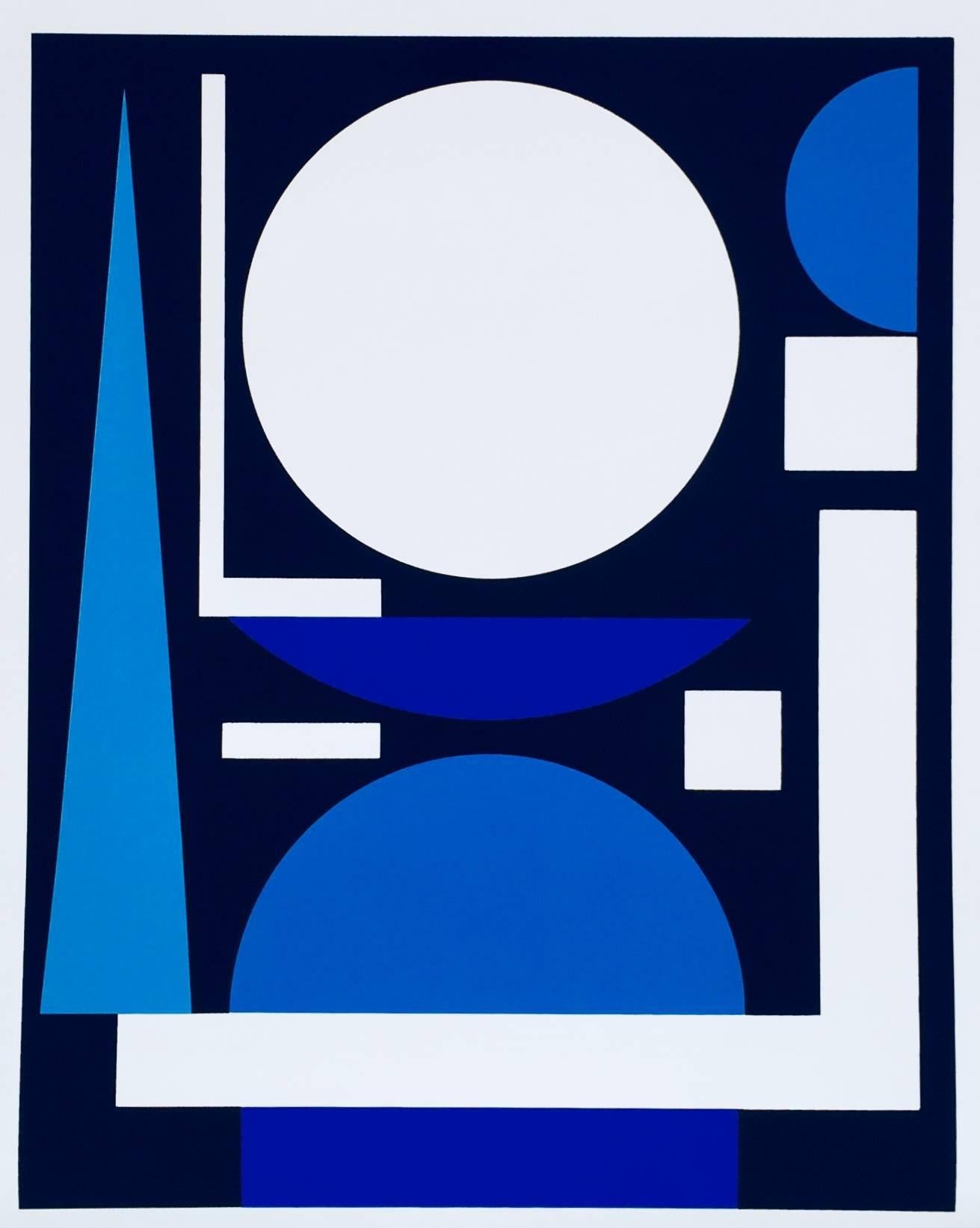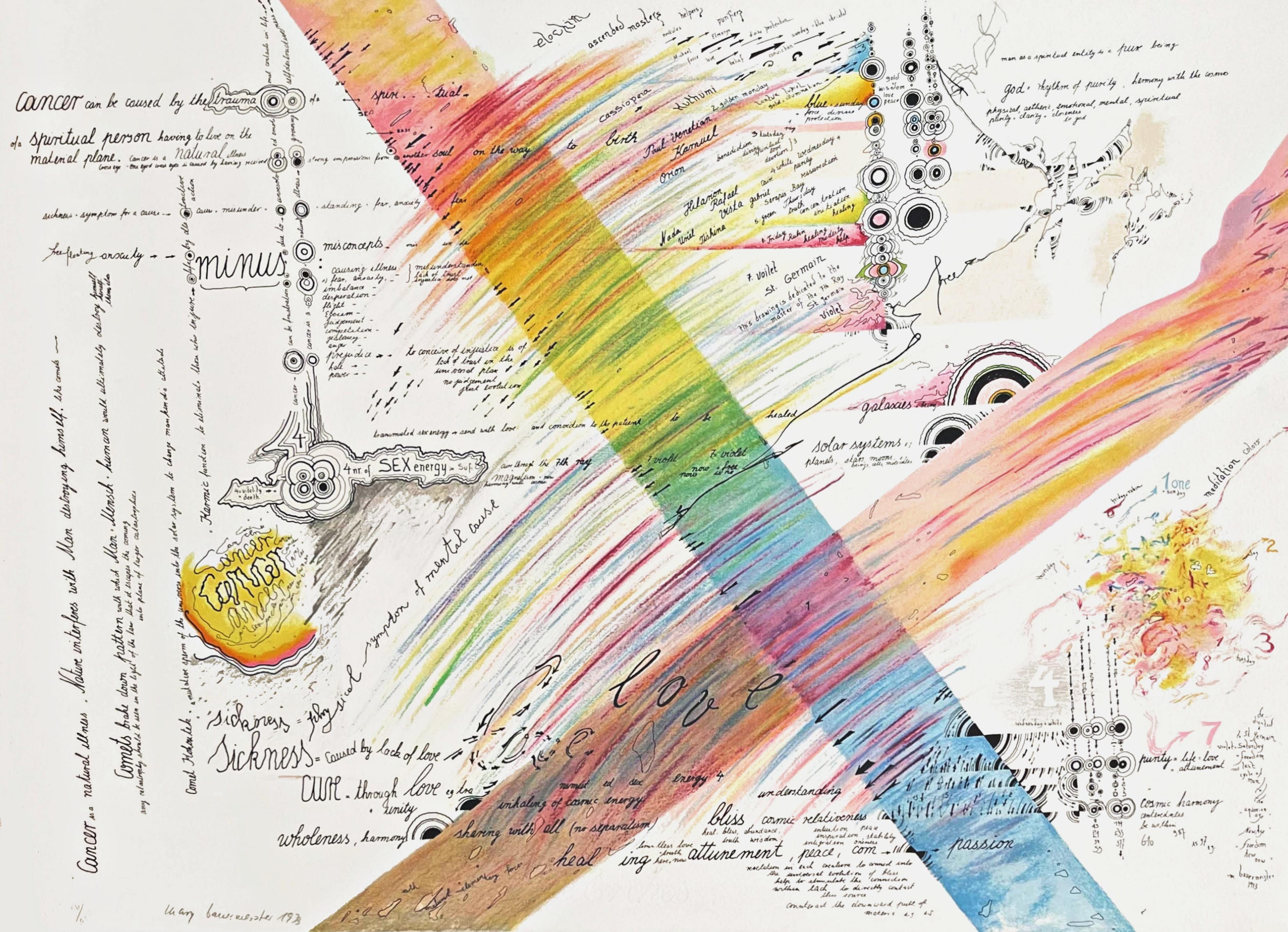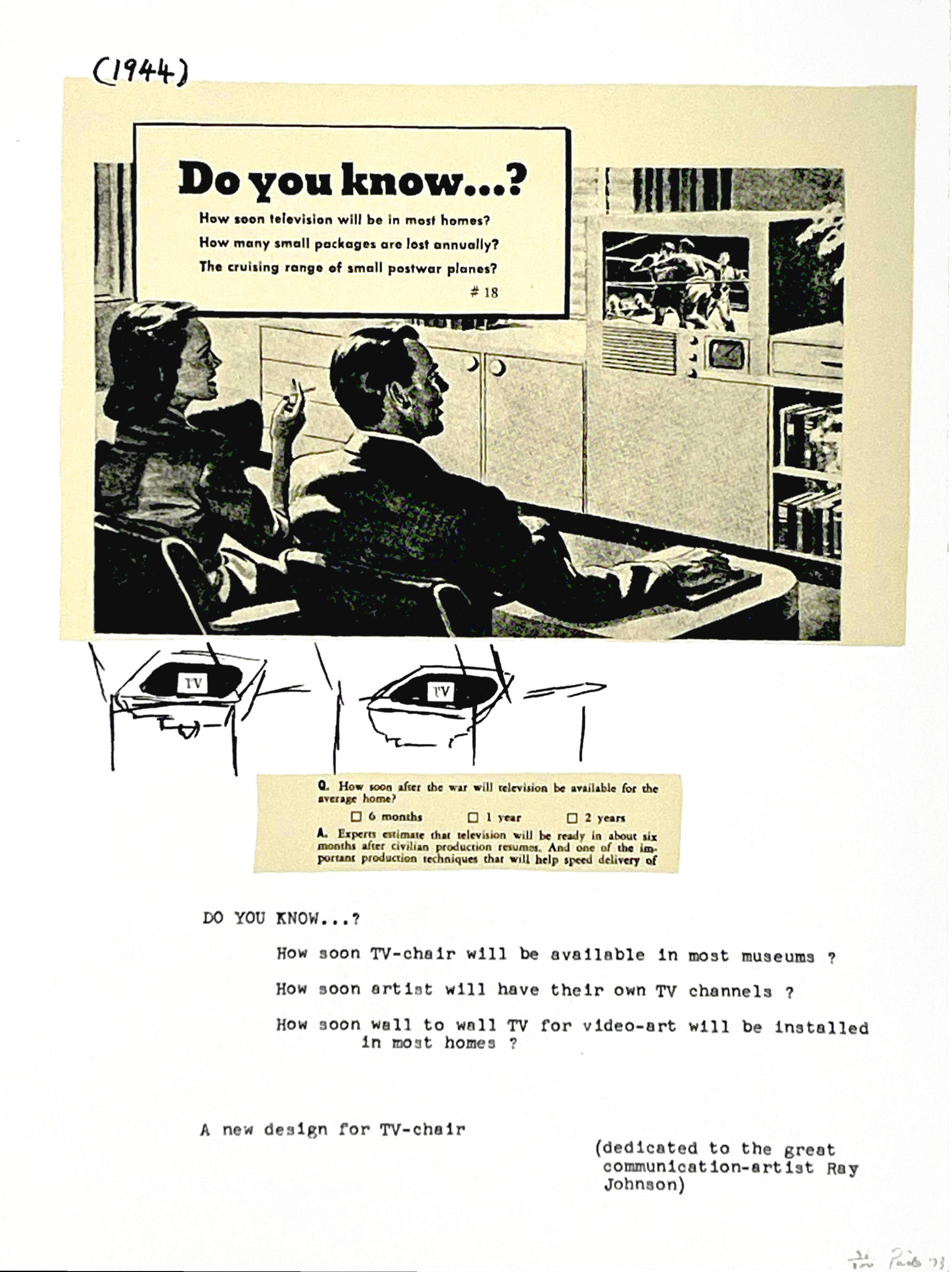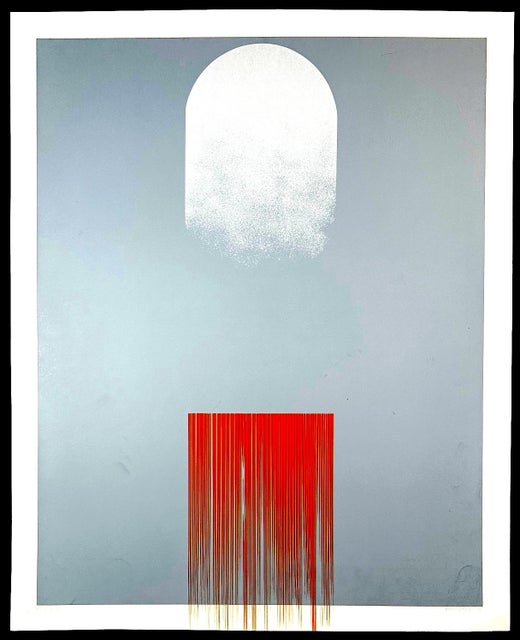Items Similar to Propagation-L, mid century figurative abstract screenprint, 20th century artist
Want more images or videos?
Request additional images or videos from the seller
1 of 9
Takesada MatsutaniPropagation-L, mid century figurative abstract screenprint, 20th century artist1971
1971
About the Item
Takesada Matsutani (Japanese, b. 1937)
Propagation-L, 1971
Screenprint in colors
Edition 51/75
28 x 27 inches
28.25 x 27.25 inches, framed
Takesada Matsutani is a Japanese avant-garde artist based in Paris and Nishinomiya. Active as a painter since the 1950s, Matsutani's practice has also included object-based sculpture, printmaking and installation. Matsutani was a member of the Gutai Art Association from 1963 until its dissolution in 1972. Gutai leader Jirō Yoshihara prioritized artistic innovation and originality, a lesson that has remained with the artist throughout his career.
Since 1961, Matsutani has used wood glue, what was then a newly available material in post-war Japan, to create organic forms on the surface of the canvas. Fascinated by the variety of evocative shapes that revealed themselves through his manipulation of the glue mixed with paint, the artist regularly returned to these biomorphic forms across a variety of mediums and styles, even adapting them to the context of hard-edge painting in the 1970s.
After receiving a scholarship to study for six months in Paris in 1966, Matsutani chose to settle there permanently. Throughout the late 1960s and 1970s, he worked primarily as a printmaker. Since the late 1970s, in parallel to his painting practice, Matsutani has been using graphite and paper as the base for large-scale installations, entitled Streams. These works, finalized by a performance of the artist in situ, explore time, energy and transformation in muted tones of black and white.
Matsutani's works are represented in a large number of art museums and collections around the world. In 2002 the artist, who has lived a large part of his childhood in Nishinomiya, received the Nishinomiya City Cultural Award.
- Creator:Takesada Matsutani (1937, Japanese)
- Creation Year:1971
- Dimensions:Height: 28 in (71.12 cm)Width: 27 in (68.58 cm)
- Medium:
- Movement & Style:
- Period:
- Condition:
- Gallery Location:Beachwood, OH
- Reference Number:1stDibs: LU1768213888182
Takesada Matsutani
Takesada Matsutani is a Japanese avant-garde artist based in Paris and Nishinomiya. Active as a painter since the 1950s, Matsutani's practice has also included object-based sculpture, printmaking and installation. Matsutani was a member of the Gutai Art Association from 1963 until its dissolution in 1972. Gutai leader Jirō Yoshihara prioritized artistic innovation and originality, a lesson that has remained with the artist throughout his career. Since 1961, Matsutani has used wood glue, what was then a newly available material in post-war Japan, to create organic forms on the surface of the canvas. Fascinated by the variety of evocative shapes that revealed themselves through his manipulation of the glue mixed with paint, the artist regularly returned to these biomorphic forms across a variety of mediums and styles, even adapting them to the context of hard-edge painting in the 1970s. After receiving a scholarship to study for six months in Paris in 1966, Matsutani chose to settle there permanently. Throughout the late 1960s and 1970s, he worked primarily as a printmaker. Since the late 1970s, in parallel to his painting practice, Matsutani has been using graphite and paper as the base for large-scale installations, entitled Streams. These works, finalized by a performance of the artist in situ, explore time, energy and transformation in muted tones of black and white. Matsutani's works are represented in a large number of art museums and collections around the world. In 2002 the artist, who has lived a large part of his childhood in Nishinomiya, received the Nishinomiya City Cultural Award.
About the Seller
No Reviews Yet
Vetted Seller
These experienced sellers undergo a comprehensive evaluation by our team of in-house experts.
Established in 1975
1stDibs seller since 2022
9 sales on 1stDibs
Typical response time: 19 hours
- ShippingRetrieving quote...Ships From: Beachwood, OH
- Return PolicyA return for this item may be initiated within 14 days of delivery.
More From This SellerView All
- Fiesta, c. 1973, red, yellow & blue figurative abstract lithographBy Alexander CalderLocated in Beachwood, OHAlexander Calder (American, 1898-1976) Fiesta, c. 1973 Lithograph in colors Signed lower right Edition: E. A. 20 x 28 inches 35.5 x 37.75 inches, framed One of America's best known ...Category
1970s Modern Abstract Prints
MaterialsLithograph
- Red Sphere on Yellow Ground, mid-century modern abstract lithographBy Alexander CalderLocated in Beachwood, OHAlexander Calder (American, 1898-1976) Red Sphere on Yellow Ground, c. 1970 Lithograph in colors Edition: 74/150 22 x 30 inches 37.5 x 29.5 inches, framed ...Category
1970s Modern Abstract Prints
MaterialsLithograph
- Arcanum VI, 1981 color screenprint, American 20th Century, Edition 76/85By Robert RauschenbergLocated in Beachwood, OHRobert Rauschenberg (American, 1925-2008) Arcanum VI, 1981 Color screenprint with collage on heavy wove paper Signed, dated and numbered 76/85 22.75 x 15.5 inches 30 x 22.75 inches, ...Category
1980s American Modern Figurative Prints
MaterialsScreen
- Red with Green, 1990 print by OpArt Cleveland artist Richard AnuszkiewiczBy Richard AnuszkiewiczLocated in Beachwood, OHRichard Anuszkiewicz (American, 1930-2020) Red with Green, 1990 Silkscreen on paper Signed and dated lower right, numbered 8/20 lower left 13.75 x 14.25 inches 23.75 x 24 inches, framed Richard Anuszkiewicz was born in Erie, Pennsylvania to Polish immigrants. While at the Cleveland Institute of Art, he studied plein-air painting with Henry Hensche. After winning a Pulitzer Traveling Fellowship in 1953, Anuszkiewicz attended Yale University where he studied under Josef Albers. While at Yale he studied alongside fellow Cleveland Op artist Julian Stanczak. After receiving his M.F.A. at Yale, Anuszkiewicz went on to Kent State University where he graduated with a Bachelor of Science in Education. At just age 23, his work was exhibited at the May Show at the Cleveland Institute of Art. He was given his first solo show in March 1960 in New York. Because of his early success, Anuszkiewicz had the freedom to pursue his ideas creatively. Anuszkiewicz was one of the leading artists of the Op Art movement during the 1960s and 1970s. His style is distinctive for its high-intensity colors that he applies to geometric configurations. Many of Anuszkiewicz works are reminiscent of Josef Albers paintings...Category
1990s Op Art Abstract Prints
MaterialsScreen
- Alice in Wonderland, 1960s Large Mural by Andrew Karoly & Louis SzantoLocated in Beachwood, OHAndrew Karoly (Hungarian-American, 1893-1978)/ Louis Szántó (Hungarian-American, 1889-1965) Alice in Wonderland, 1960 Oil on canvas Signed and dated low...Category
1960s American Modern Figurative Paintings
MaterialsOil
- Torso No. 3, Mid-Century Figural Abstract Acrylic Painting, Ohio artistBy Clarence Holbrook CarterLocated in Beachwood, OHClarence Holbrook Carter (American, 1904-2000) Torso No. 3, 1967 Acrylic on paper Signed and dated lower right 13 x 9 inches 21 x 17 inches A mid-century figural abstract painting. Clarence Holbrook Carter achieved a level of national artistic success that was nearly unprecedented among Cleveland School artists of his day, with representation by major New York dealers...Category
1960s American Modern Abstract Paintings
MaterialsAcrylic
You May Also Like
- El Herido, 1960's Spanish Avant Garde Political Screenprint Lithograph SignedBy Rafael CanogarLocated in Surfside, FLThe Wounded One (El Herido) from Violence (La Violencia) 1969 signed, dated and titled in pencil Dimensions: sheet: 22 1/16 x 30 1/16" (56 x 76.4cm) Rafael Canogar ( Toledo , 1935) is a Spanish painter, one of the leading representatives of abstract art in Spain. Disciple of Daniel Vazquez Díaz (1948-1953), in his first works he found a way to reach the avant garde and, very soon, to study abstraction deeply. He initially used a sculpture technique: with his hands he scratched or squeezed the paste that vibrated on flat colored backgrounds. It was a painting in which the initial gesture comes directly from the heart. At this point, Canogar embodied the best of painting material . In 1957 he founded with other artists the EI Paso group. With artists like Luis Feito, Manolo Millares, Pablo Serrano, Manuel Rivera and Antonio Saura, he begins the Spanish avant-garde movement and continues to do so until 1960. It is influenced by Action painting. They defended, between 1957 and 1960 , an informal aesthetic and the opening of Franco Spain...Category
1960s Modern Abstract Prints
MaterialsScreen
- 1970s Josef Albers Auguste Herbin exhibition poster (Albers prints)By Josef AlbersLocated in NEW YORK, NYJosef Albers & Auguste Herbin Paris, 1975: Vintage original silk-screened exhibition poster published in conjunction with a joint exhibition by Auguste Herbin & Josef Albers at Galer...Category
1970s Modern Abstract Prints
MaterialsScreen
- Note DBy Grisha BruskinLocated in New York, NYGrisha Bruskin Note D, 1991 Color silkscreen on Somerset paper 34 × 27 inches Edition 74/75 Boldly signed and numbered on front in graphite pencil. Published by Marlborough Graphics Unframed From Russian-American Jewish artist Grisha Bruskin's "Notes" series. In Russia, Bruskin had been accused of creating “subversive” Soviet art and “Jewish propaganda". But he's said, “We have no prejudice here. Even Russians can feel something for art. Some Russians understand the Jewish paintings and some stupid Jewish people do not. It depends upon the person.” Below is an excerpt from a 1988 New York Times profile on Bruskin: “It is my intention to create two lines of mythology based on the mentality of socialism and Judaism,” he solemnly declares, while acknowledging the “difficulty of looking at Soviet art with Western criteria.” Bruskin’s paintings of Jewish characters are equally perplexing to some Soviets, though their meaning is not as evident because he has invented his own symbols. “In Egyptian or Assyrian art, there were symbolic equivalents of beliefs, but not in Judaism,” he says. “I was interested in creating them not at a secular level but at an artistic level.” In his Jewish-themed works, gnome-like characters may appear upside-down, carrying an angel, a menorah or a strange beast. Snippets of Hebrew text...Category
1980s Modern Abstract Prints
MaterialsScreen
- Clothes 2By Menashe KadishmanLocated in New York, NYMenashe Kadishman Clothes 2, 1973 Silkscreen on wove paper Signed and numbered 31/70 on the front 23 1/4 × 32 1/2 inches Edition 31/70 Chris Prater of Kelpra Studio, Kentish Town, En...Category
1970s Modern Abstract Prints
MaterialsScreen
- Rainbow Signed 1970s silkscreen & lithograph by pioneering female Fluxus artistBy Mary BauermeisterLocated in New York, NYMary Bauermeister Rainbow, 1973 Lithograph and silkscreen on creamy white paper Hand signed, dated and numbered 56/250 by the artist on the front 19 x 25.5 inches Unframed This work is on the permanent collection of various institutions like: Rice University, Samuel Dorksy Museum of Art, Rutgers Zimmerli Museum and Wheaton College Massachusetts. While studying the fringe sciences the 1970s, Bauermeister created Rainbow (1973), a lithograph and silkscreen. She uses a creamy white background as the base. Two intersecting diagonal bands of color transcend across the page, and black cursive lettering dances over the surface serving as a mind map of interweaving ideas. Through the central band, Bauermeister shifts through the color spectrum; she begins with red and finishes with violet. Inspired by music, she uses strokes of color that are rhythmically smeared across the lithograph. The surface lettering, a kind of visual poetry, explores her interest in human emotion and science. The viewer can see Bauermeister’s thoughts as they flow into one another through the use of words such as bliss, love, and healing. Bauermeister also includes a repetition of words such as cancer, sickness, and cure. The word cancer emerges from a cell-like shape. A careful study of the words shows that they may seem dark in nature; however, she juxtaposes these words against the cheerful title and colors. Perhaps the rainbow symbolizes a new hope, an inspiration for an optimistic future. -Courtesy to the Samuel Dorsky Museum of Art About Mary Bauermeister: A multidisciplinary artist known for her intricate and enigmatic assemblages, Mary Bauermeister (1934-2023) continues to defy categorization with layered works in a range of media. A precursory figure of the Fluxus movement—her studio was the meeting point for a number of defining artists of the avant-garde—her work plays an integral role in the discussion of art, both European and American, that emerged from the 1960s. Her reliefs and sculptures, which have incorporated drawing, text, found objects, natural materials and fabric, reference a plethora of concepts: from natural phenomena and astronomy to mathematics and language, as well as her own “spiritual-metaphysical experiences.” Maturing amidst the currents of Minimalism and Pop Art, Bauermeister’s art has resisted labels due to the singular expression of her interests and concerns, among them the simultaneous transience and permanence of the natural world with experimentations in transparency and magnification, multiplication and variation, structure and order, chance and ephemerality, introversion and extroversion. Her three-dimensional receptacles of thoughts, ideas, and notes contain visual, conceptual, and philosophical paradoxes that challenge perceptions and that offer literal and metaphorical windows into which one can glimpse the inner workings of the artist’s mind. - Courtesy of Michael Rosenfeld...Category
1970s Modern Abstract Prints
MaterialsLithograph, Screen, Mixed Media, Pencil, Graphite
- Do You Know...?, from the New York Collection for Stockholm portfolio (Signed/N)By Nam June PaikLocated in New York, NYNam June Paik Do You Know...?, from the New York Collection for Stockholm portfolio, 1973 Silkscreen on paper, in original portfolio sleeve Signed and dated '73 and numbered 36/300 i...Category
1970s Modern Figurative Prints
MaterialsScreen, Pencil






